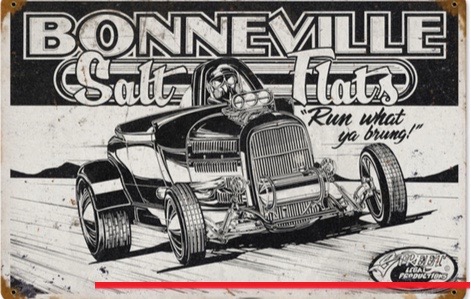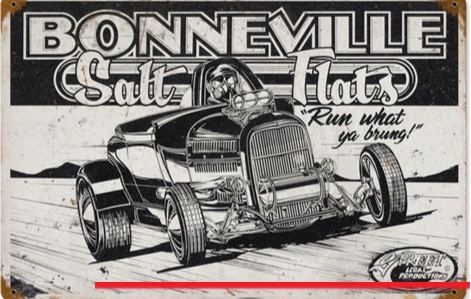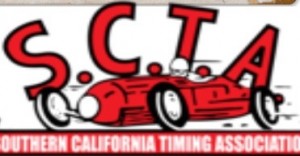The Southern California Timing Association warned that Speed Week could very well be canceled for the second year in a row this week in a missive to racers and fans.
Not canceled yet, but? Seems like Mother Nature is still not cooperating with us,” the SCTA warned on their website.
“The SCTA/BNI met yesterday, July 12, to discuss contingency plans. We will make a final decision on Speed Week no later than July 22nd. We can tell you how it is now, but not how it will be in 10 days.
 Our advance team spent the July 4th weekend on the Bonneville Salt Flats trying to find adequate salt to conduct the 2015 Speed Week event; unfortunately without much success. A portion of the courses were still underwater and other areas were suffering from rough and /or muddy salt. A pretty good analysis appeared recently in the Salt Lake City Newspaper. You can see the “Mud flow” on Google Satellite Maps.
Our advance team spent the July 4th weekend on the Bonneville Salt Flats trying to find adequate salt to conduct the 2015 Speed Week event; unfortunately without much success. A portion of the courses were still underwater and other areas were suffering from rough and /or muddy salt. A pretty good analysis appeared recently in the Salt Lake City Newspaper. You can see the “Mud flow” on Google Satellite Maps.
While staying optimistic, when and if the entire area dries, we are hoping to find the 7 Miles of dry/smooth salt necessary for the event. The plan is to visit the Salt again on July 20th to assess the situation. It will likely involve attempting to drag/prep some courses.
We are also considering the feasibility of having a “Short course only” event if we are able to find 4 miles of good course. We would like to know how many folks might come for such an event. We will be contacting all of the Pre-Entrants.”

In 2014 Speed Week was canceled for the first time in 20 years by the Southern California Timing Association due to rain.
According to the SCTA web page the amount of water dumped on the famous race was simply was too much to drain or evaporate before the start of the event.
The last time rain caused the cancellation of Speed Week was in 1994 but according to what few records were kept and the memory of old time Nevadans this year’s cancellation could be harbinger of several more in the coming decade.
Already unusually late spring storms drenched northern Nevada for almost two weeks this May supporting ranchers claims that rural Nevada is headed toward a wet cycle.
Those heavy rains both last year and this past spring caused a layer of mud to flow down from the surrounding mountains onto the salt flats, covering roughly 6 miles of the area usually converted into a race course.
 Salt flats or pans are some of the most geologically unstable features on the planet. A salt pan is formed where water pools evaporate. An example of a salt pan would be a lake or a pond that is located in a climate where the rate of water evaporation exceeds the rate of water precipitation. If the water is unable to drain into the ground, it remains on the surface until it evaporates, leaving behind minerals precipitated from the salt ions dissolved in the water. Over thousands of years, the minerals (usually salts) accumulate on the surface. Once created salt pans are very short lived in geological time as changing reaifaal, natural erosion and earth movements such as earthquakes seem to conspire to consume the salt pan.
Salt flats or pans are some of the most geologically unstable features on the planet. A salt pan is formed where water pools evaporate. An example of a salt pan would be a lake or a pond that is located in a climate where the rate of water evaporation exceeds the rate of water precipitation. If the water is unable to drain into the ground, it remains on the surface until it evaporates, leaving behind minerals precipitated from the salt ions dissolved in the water. Over thousands of years, the minerals (usually salts) accumulate on the surface. Once created salt pans are very short lived in geological time as changing reaifaal, natural erosion and earth movements such as earthquakes seem to conspire to consume the salt pan.



